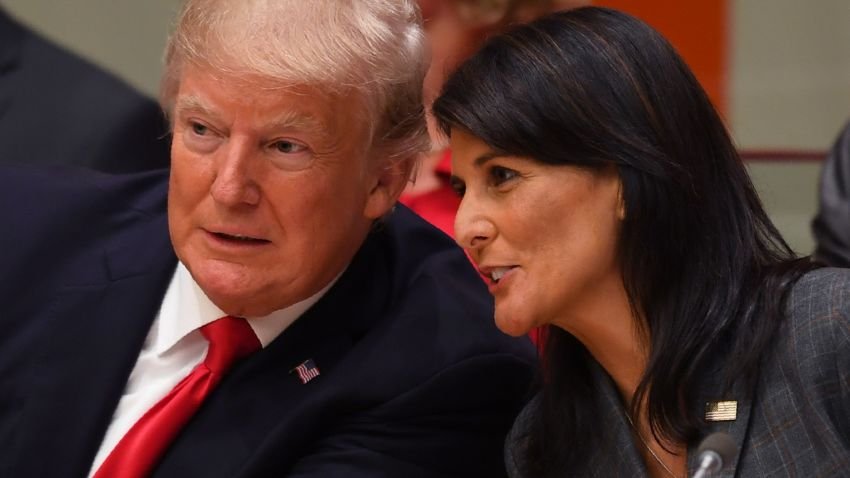Today’s news brings forth critical developments in the political landscape, particularly revolving around Nikki Haley’s candid critique of former President Trump, her strategic moves to secure union support, and her efforts to navigate the complex terrain of the Republican primary campaign.
Nikki Haley’s Candid Critique of Trump and Biden
In a recent radio interview, Nikki Haley, a prominent figure within the Republican Party, offered her sharpest critique yet of former President Trump. Haley characterized Trump’s leadership as chaotic, self-absorbed, divisive, and lacking moral clarity. She emphasized the need for a president to possess moral clarity and discernment between right and wrong, highlighting Trump’s toxicity as a significant concern.
Haley’s critique of Trump marks a critical moment in her campaign as she seeks to distinguish herself from the former president and position herself as a viable alternative within the Republican Party. Her remarks reflect a calculated effort to appeal to voters disillusioned with Trump’s leadership style and ideological approach.
In addition to critiquing Trump, Haley has also sought to draw parallels between Trump and President Biden, framing them as “grumpy old men” in a new campaign effort. By juxtaposing Trump and Biden, Haley aims to present herself as a fresh and forward-looking alternative, capable of transcending partisan divides and offering pragmatic leadership.
Strategic Moves to Secure Union Support
The battle for union support emerges as a pivotal battleground in the lead-up to the 2024 presidential election. While Biden secured the endorsement of the United Auto Workers (UAW) last week, Trump remains a formidable contender for union support, particularly among working-class voters.
Trump’s appeal to union workers, demonstrated since 2016, poses a significant challenge to traditional Democratic alliances with organized labor. Despite differences in leadership endorsements, Trump’s ability to resonate with rank-and-file union members underscores the complexities of union politics and the shifting dynamics within the labor movement.
The Teamsters, a union representing over 1.4 million members, stand as a potential game-changer in the battle for union support. While Biden and Trump vie for the Teamsters’ endorsement, the rift between union leadership and rank-and-file members underscores the divergent interests within the labor movement.
Haley’s Campaign Strategy and the Path Forward
As Haley navigates the Republican primary campaign, she faces formidable challenges in securing both grassroots support and elite donor backing. Despite facing skepticism from segments of the Republican base, Haley remains undeterred in her pursuit of the nomination, adopting a “Hail Mary” strategy to defy expectations and emerge as a viable contender.
Haley’s strategy hinges on expanding her appeal beyond traditional Republican strongholds and tapping into broader coalitions of voters, including independents and disaffected Democrats. By framing herself as a pragmatic alternative to both Trump and Biden, Haley seeks to carve out a distinct niche within the Republican Party and position herself as a unifying force capable of bridging ideological divides.
The road ahead for Haley’s campaign is fraught with challenges and uncertainties. While she faces stiff competition from other Republican contenders, Haley’s ability to mobilize grassroots support and cultivate strategic alliances could prove decisive in shaping the trajectory of the primary race.
In conclusion, Nikki Haley’s candid critique of Trump, her strategic maneuvers to secure union support, and her calculated campaign strategy underscore the fluid and dynamic nature of contemporary American politics. As the 2024 presidential election looms on the horizon, Haley’s political aspirations stand at a crossroads, poised to shape the future trajectory of the Republican Party and the broader political landscape.
